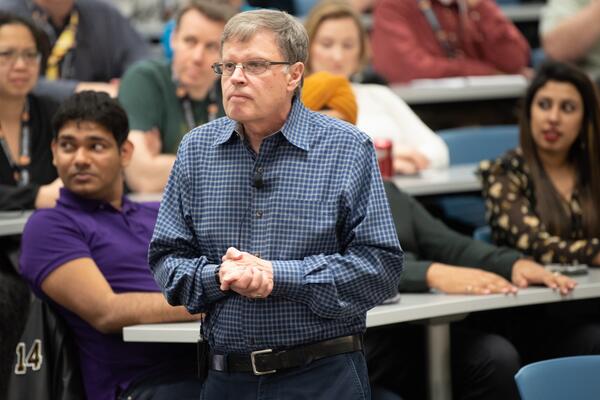
When every second counts
Device developed by Waterloo grads now being used to remove clots in brains of stroke victims

Device developed by Waterloo grads now being used to remove clots in brains of stroke victims
By Brian Caldwell Faculty of EngineeringA medical technology company launched by two Waterloo Engineering graduates is making news this week with the announcement that a device it developed has been successfully used to treat stroke victims.
Vena Medical, which grew out of a Capstone Design project by Michael Phillips and Phillip Cooper when they were classmates in the mechanical engineering program, earned Health Canada approval earlier this year for hardware it calls the Vena Balloon Distal Access Catheter (BDAC).
Now the device has been used by surgeons at hospitals in London and Ottawa to remove blood clots and restore blood flow as quickly as possible for five patients.
“We’re proud to have the first patients to benefit from our Canadian-developed technology within driving distance of our office, in the hands of world-class physicians,” said Phillips, CEO of the Kitchener-based company, in a media release.
“This is cutting-edge technology that would normally need to be launched somewhere far from here, but we’re excited to make an impact locally before we make an impact globally.”
Doctors raved in media releases about the effectiveness of the device, which combines a balloon guide catheter and a distal access catheter to get closer to blood clots in the brains of stroke victims during surgery to remove them.
An inflatable balloon temporarily restricts blood flow while surgeons use tools to remove clots, increasing the chances of success on the first attempt. Other advantages over existing, separate devices include better patient outcomes and reduced costs.
“The BDAC isn’t even comparable to the competitors,” said Dr. Sachin Pandey, who used the device alongside Dr. Michael Mayich at the London Health Sciences Centre-University Hospital.
“The Vena BDAC is a category-defining device and we’re excited to be the first in the world to evaluate its performance,” said Dr. Robert Fahed of The Ottawa Hospital. “Each case has been successful so far with the BDAC getting the clot out on the first try, every time.”
The first time the device was used in late June, a clot was removed from the brain of stroke victim Wilene Leyen in less than 10 minutes by Mayich and his team. Her movement and speech were restored almost immediately.
“I can do almost everything I was able to do before I suffered the stroke and I’m very grateful Dr. Mayich was able to perform this procedure,” Leyen said in a release.
Phillips met with the Goderich woman for the first time this week and said it was difficult to put into words how much it meant to him to see how well she is recovering.
“When a blood clot is causing a stroke, over two million brain cells can be lost each minute, so seconds count,” Mayich said. “By locating and removing the clot in a shorter period of time, the patient has a higher probability of regaining mobility and speech.
“This device offers the possibility of removing clots in fewer attempts, shortening the procedure and maximizing the chances of good outcomes for our patients.”
Phillips and Cooper initially worked out of the Velocity startup incubator at the University of Waterloo, and secured financial backing from several entrepreneurship programs at Waterloo Engineering to pursue commercialization of their student project after they graduated in 2017.
The Vena BDAC developed out of the company’s flagship product, a tiny camera – billed as the world’s smallest – to allow doctors to see inside veins and arteries during stroke surgery.
The company is now based at the Medical Innovation Xchange, a member of the federally funded Southwestern Ontario Health Innovation Partnership, in Kitchener and has eight employees.
Information and support for students interested in turning their Capstone Design projects into startup companies are available through the Velocity Cornerstone program.
Main photo: Michael Phillips, third from left, and Phillip Cooper, right, of Vena Medical pose with a colleague and medical officials at the London Health Sciences Centre in London after the first use of a new device to remove blood clots in the brains of stroke victims.

Read more
Fourth-year Global Business and Digital Arts student leverages artificial intelligence to fight food inflation, saving families up to $5,000 each year

Read more
Here are the people and events behind some of this year’s most compelling Waterloo stories

Read more
For more than four decades, Waterloo professor Larry Smith has helped build the University's reputation for innovation and entrepreneurial excellence
The University of Waterloo acknowledges that much of our work takes place on the traditional territory of the Neutral, Anishinaabeg, and Haudenosaunee peoples. Our main campus is situated on the Haldimand Tract, the land granted to the Six Nations that includes six miles on each side of the Grand River. Our active work toward reconciliation takes place across our campuses through research, learning, teaching, and community building, and is co-ordinated within the Office of Indigenous Relations.